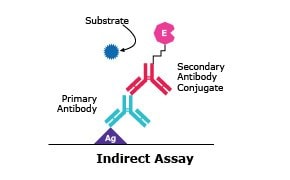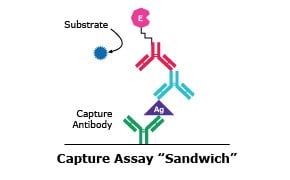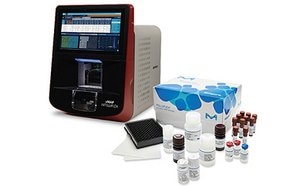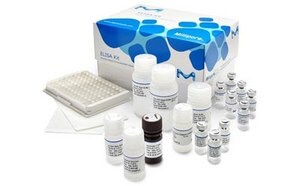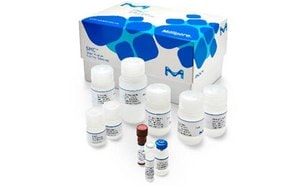(ELISA) Enzyme-Linked Immunosorbent Assay
Typically performed in multi-well microtiter plates, ELISAs are a molecular biology assay commonly used for the detection and quantification of diverse molecules, including peptides, proteins, and antibodies. Such assays can detect molecules of interest at the pg/mL level and are critical for both basic research and disease research application needs.
ELISA Assays: Antibody-Antigen Interactions
The fundamental molecular components of an ELISA typically include the use of antibody conjugated to an enzyme, an immobilized molecule(s) of interest, and a detection substrate. A critical aspect that determines the success and quality of data obtained from an ELISA is dependent on the affinity and specificity of antibody-antigen interactions. Antigen-antibody interactions are influenced by numerous factors, including pH, temperature, and ionic strength.
Featured Categories
Discover with confidence using MILLIPLEX® multiplex immunoassays for Luminex® instruments while ensuring robust assay performance and an always expanding portfolio to meet your biomarker detection needs.
ELISA kits, reagents, and resources for biomarker detection.
Single Molecule Counting (SMC®) technology precisely quantifies molecules at previously undetectable levels.
ELISA Detection Formats
ELISAs that use direct detection methods require an immobilized antigen that is bound directly to the surface of an assay plate or indirectly by a capture antibody, followed by an antigen-specific primary antibody conjugated to an enzyme, and the detection substrate.
The more commonly used indirect detection format incorporates both an unconjugated primary antibody, followed by a conjugated secondary antibody that is specific to the detection of the primary antibody. Indirect detection benefits from increased immunoreactivity with the target antigen as the conjugated enzyme element is only present on the secondary antibody.
In addition to direct and indirect detection methods, capture or “sandwich” assays use an additional antigen-capturing antibody that is first attached to the microplate surface, followed by the use of both a primary and an enzyme-conjugated secondary antibody, similar to the indirect method previously described.
Visit our document search for data sheets, certificates and technical documentation.
Related Articles
- Learn about the Conferma® ELISA development and manufacturing methods that provide strong sample detection and long-term assay and lot consistency, giving you confidence in your research.
- Learn differences in monoclonal vs polyclonal antibodies including how antibodies are generated, clone numbers, and antibody formats.
- Troubleshoot and optimize ELISAs using this guide that includes solutions to some of the most common sources of problems for assay development.
- ELISpot assay provides qualitative and quantitative information on immune responses, visualizing multiple secretory products from single responding cells.
- Accelerate your time to market with fit-for-use products which offer the quality, consistency, and documentation necessary for every step of your IVD development and manufacturing needs.
- See All (18)
Related Protocols
- This article offers 4 popular ELISA protocols: Sandwich ELISA protocol, Phosphorylation Assay Procedure, EIA Assay Procedure, & Cell-based Assay Procedure.
- Detailed ELISA protocols cover indirect and capture ELISA techniques, recommending products for sandwich and indirect ELISA experiments.
- Cell Proliferation ELISA, BrdU (colorimetric) Protocol & Troubleshooting
- Protocol for the one-step, glutaraldehyde coupling method to conjugation alkaline phosphatase to antibodies and other proteins.
- See All (4)
Find More Articles and Protocols
How Can We Help
In case of any questions, please submit a customer support request
or talk to our customer service team:
Email custserv@sial.com
or call +1 (800) 244-1173
Additional Support
- Calculators & Apps
Web Toolbox - science research tools and resources for analytical chemistry, life science, chemical synthesis and materials science.
- Customer Support Request
Customer support including help with orders, products, accounts, and website technical issues.
- FAQ
Explore our Frequently Asked Questions for answers to commonly asked questions about our products and services.
To continue reading please sign in or create an account.
Don't Have An Account?
